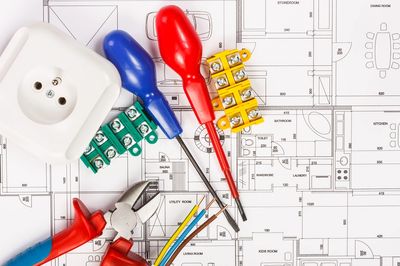Property Maintenance Management
Comprehensive Guide to Maintenance Management for High-End Properties
Owning or managing high-end properties means maintaining them in pristine condition to safeguard the asset’s value and provide an exceptional experience for residents or guests. In this article, we'll explore a robust maintenance strategy for luxury properties, highlighting the importance of preventative and reactive maintenance, implementing detailed checklists, adhering to maintenance schedules, and selecting trusted vendors.
1. The Importance of Preventative Maintenance
Preventative maintenance refers to regular, scheduled maintenance activities that prevent potential issues before they arise. In high-end properties, this approach is essential for avoiding disruptions, maintaining high-quality appearances, and reducing costly emergency repairs.
Preventative tasks might include:
- HVAC inspections and filter replacements
- Plumbing checks to prevent leaks and water damage
- Electrical inspections to ensure safety and functionality
- Regular exterior cleaning, including window washing and façade upkeep
- Grounds and landscaping maintenance
Preventative maintenance, when properly planned and executed, not only preserves the aesthetic value but also extends the life of systems and reduces unexpected expenses.
2. Reactive Maintenance for Urgent Repairs
Reactive maintenance, or addressing repairs as they occur, is inevitable in property management. Even with comprehensive preventative measures, urgent repairs may be required, particularly in luxury settings where residents expect rapid resolution.
Examples of reactive maintenance might include:
- Emergency plumbing fixes, such as leaks or burst pipes
- Electrical issues that pose safety risks
- Appliance repairs
- Unexpected HVAC breakdowns
For high-end properties, prioritizing quick response times to reactive maintenance requests helps maintain tenant satisfaction. A skilled and reliable maintenance team that can address these issues with precision and discretion is essential.
3. Developing Maintenance Checklists
Checklists are vital tools in high-end property maintenance. They ensure that every aspect of the property is consistently monitored and maintained to high standards. Checklists should be detailed and tailored to the unique aspects of the property, accounting for high-end fixtures, custom installations, and luxury finishes.
Example Checklists for High-End Properties:
- HVAC Systems: Quarterly inspection, filter replacement, thermostat calibration, duct cleaning.
- Plumbing: Inspection for leaks, pressure checks, water heater servicing, sump pump testing.
- Electrical: Checking and replacing light bulbs, outlet and switch inspection, and testing smoke and carbon monoxide detectors.
- Exterior Maintenance: Seasonal inspections of roofing, windows, doors, walkways, and landscaping.
- Interior Cleaning: Deep cleaning schedules for carpets, upholstery, marble surfaces, and specialized finishes.
Each checklist item should include detailed instructions for completion, along with frequency, priority, and any special requirements.
4. Creating a Maintenance Schedule
Scheduling maintenance tasks is crucial to ensure they’re performed regularly and consistently. For high-end properties, this schedule should include both preventative and reactive tasks, specifying timeframes for each.
Key Aspects of a High-End Property Maintenance Schedule:
- Monthly Tasks: Routine cleaning, basic inspections, and addressing minor repairs.
- Quarterly Tasks: HVAC filter replacement, plumbing checks, pest control treatments, elevator inspections (if applicable).
- Semi-Annual Tasks: Exterior cleaning, appliance checks, deep cleaning of upholstery, curtains, and carpets.
- Annual Tasks: Full-system inspections (HVAC, plumbing, and electrical), roofing inspections, and landscaping refreshes.
Advanced scheduling software can help keep track of these tasks and send automated reminders, helping to avoid lapses in maintenance.
5. Selecting and Managing Vendors
Having a network of reliable vendors is essential for high-end property maintenance. These vendors should be experienced, licensed, insured, and able to perform quality work that meets the property’s standards. Key vendors for luxury properties often include:
- HVAC Specialists
- Plumbing Experts
- Electrical Services
- Specialized Cleaners for delicate materials like marble, high-grade wood, and custom fixtures
- Landscaping Services to maintain upscale outdoor aesthetics
- General Contractors for repairs and remodels
Establishing long-term relationships with trusted vendors can also lead to priority service, discounted rates, and improved accountability, ensuring top-notch maintenance at all times.
6. Implementing Technology for Streamlined Maintenance
Using a property management software with maintenance features can significantly improve maintenance efficiency. Many platforms offer capabilities like:
- Scheduling and Notifications: Set up recurring tasks and receive reminders.
- Digital Checklists: Manage and check off tasks in real-time.
- Vendor Management: Store vendor information and communicate directly with service providers.
- Document Storage: Keep track of warranties, repair histories, and maintenance records.
- Analytics and Reporting: Monitor maintenance costs, efficiency, and trends over time.
By digitizing maintenance workflows, luxury property managers can easily track tasks, communicate with teams, and ensure that nothing falls through the cracks.
Conclusion
A comprehensive maintenance management strategy for high-end properties involves a balance of preventative and reactive maintenance, detailed checklists, rigorous scheduling, and collaboration with reliable vendors. By implementing these practices, property managers can protect their property investments, provide an elevated experience for residents, and ensure the longevity and value of luxury properties.

This website uses cookies.
We use cookies to analyze website traffic and optimize your website experience. By accepting our use of cookies, your data will be aggregated with all other user data.
